Everglades National Park is located in the south of Florida, and is characterized by vast wetlands populated by alligators and marked by low elevation. Spanning 2,357 sqmi, it is one of the largest national parks in the USA. The park welcomes visitors all year round.
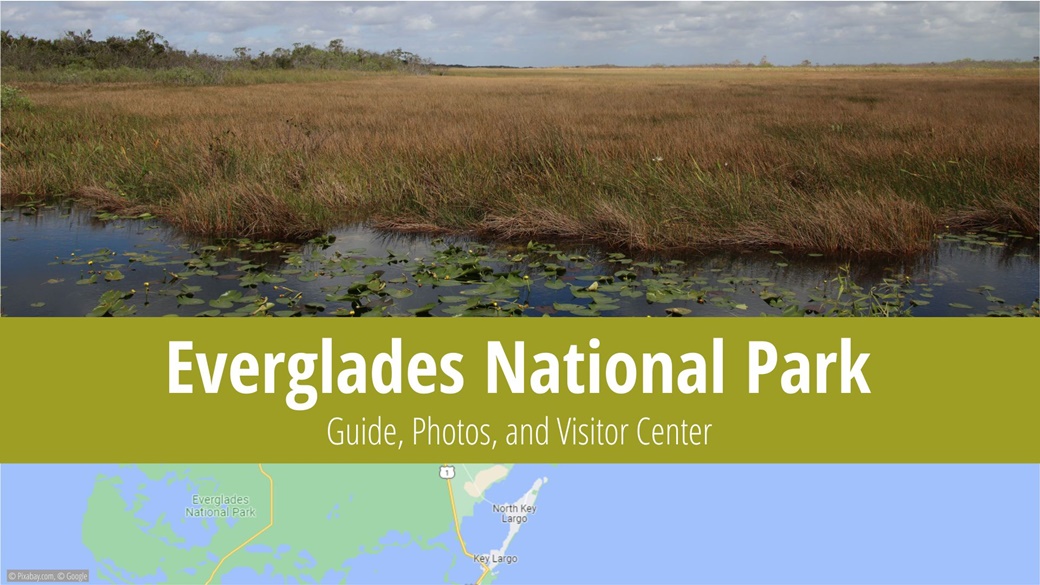
Table of Contents
- Information About Everglades National Park
- What to See and Do in Everglades National Park
- Best Time to Visit Everglades National Park
- Entrance Fees for Everglades National Park
- Getting to Everglades National Park
- Lodging in Everglades National Park
- Advice and Recommendations Before Traveling to Everglades National Park
- Photos of Everglades National Park
Information About Everglades National Park
Everglades National Park was declared a national park by President Harry Truman on May 30, 1934. In 1979, it was added to the UNESCO World Heritage List and eight years later, the Ramsar List of Important Wetlands. In 2021, the Everglades received 942,130 visitors.
The Everglades primarily consists of wetlands that house over a thousand different species of plants. Common species include various grasses, succulents, and members of the bromeliad family, which also includes the pineapple family. If you’re lucky, you might discover the secret of how pineapples grow.
Among the park’s fauna, the American alligator is the most prevalent. It is estimated that 200,000 of them inhabit the Everglades wetlands, with the largest one discovered being over 16 ft long. The critically endangered Florida cougar is present in smaller numbers in the park. Thanks to the abundance of water bodies, the Everglades boasts a large population of birds, including pelicans, cormorants, terns, and river eagles.
Of particular interest is the area created by the distinctive Pahayokee River. Although the river is not very deep (60 cm at most) and 843 ft long, it is over a 7 mi wide in some places. In parts of the park, the Pahayokee River has fostered the growth of islands densely covered with tropical trees, including protected mangroves.
What to See and Do in Everglades National Park
Hovercraft Tour
If you’ve seen at least one episode of CSI: Miami, you’ll recall the hovercraft whizzing through the wetlands in the opening theme song. Hovercrafts are as synonymous with the Everglades as sunglasses are to Horatio Caine.
Several companies offer hovercraft tours through the park, usually in combination with alligator spotting and hotel pickup. The luckiest participants not only keep all their limbs intact, but also get to see the American cougar, black panther, and local reptiles:
- Hovercraft Ride: A 30-minute ride through Everglades Park – no hotel pickup, but cheaper.
- Everglades Safari Park: Hovercraft ride and wildlife viewing safari ticket – 2-hour program.
- Everglades Safari Park with Hotel Pick-Up: Enjoy a hovercraft ride, wildlife viewing safari ticket, and hotel transfers all within a span of less than 3 hours.
Hiking in the Everglades
The hiking trails in the Everglades are mainly found in two places: to the east at Pine Island near Miami, and at the very southwestern tip of the peninsula near the town of Flamingo. In total, there are about fifteen trails. Here’s a selection of the top 5:
- Anhinga Trail
This 1 mi trail winds through marshes, where you may spot an alligator, turtle, heron or the American Anhinga (also a bird). The abundance of wildlife makes this trail one of the most popular in the park. Route map - Gumbo Limbo Trail
This short 1,969 ft trail leads through a jungle of balsam birch and royal palm trees interspersed with ferns. The trail begins just outside the Royal Palm Visitor Centre. Route map - Pineland Trail
This short trail, 2,133 ft in length, winds through areas populated by pineapple trees. Route Map - Pahayokee Overlook
Rather than a hiking trail, this is an overlook with views of a grassy river. The path is only 853 ft long. Route map - Mahogany Hammock Trail
This trail meanders along a wooden boardwalk through a jungle of trees, with mahogany trees being the predominant species. The round trip on the trail is only 2,625 ft long. Trail map
Other Activities in the Everglades
The Everglades National Park boasts 10,000 islands, mangroves, and vast expanses of open water. Both beginner and experienced paddlers can rent a kayak and paddle one of the existing routes. The options are wide-ranging, with the shortest routes taking a few hours and the longest lasting several days.
If you prefer quieter activities, such as birdwatching, the Everglades will feel like paradise. With over 300 species of birds, you can simply drive through the main entrance gate at Homestead and then embark on one of the trails. The main birdwatching spots are Paurotis Pond, Nine Mile Pond, Anhinga Trail, Snake Bight Trail, and Mrazek Pond.
Best Time to Visit Everglades National Park
The best time to visit Everglades National Park is from December to April. During this time, the weather is generally mild and tolerable throughout the area, with temperatures ranging from 54 °F to 77 °F. As it doesn’t rain much during these months, there are fewer mosquitoes in the park and conditions for viewing wildlife are optimal.
Summers in the Everglades are very hot with average temperatures around 90 °F and high humidity around 90%. Afternoon thunderstorms with torrential rains are quite common, and mosquito infestations can become a problem. If you want to experience what a swarm of mosquitoes feels like, summer in the Everglades would provide the opportunity.
Average Temperatures and Visitor Numbers in Everglades National Park
Here are the average temperatures and visitor numbers at Everglades National Park. Visitor numbers are based on the 2017-2021 average, with data provided by the National Parks Service.
| Max Temp | Min Temp | Precipitation Days | Visitors | Popularity | |
|---|---|---|---|---|---|
| January | 77 °F | 54 °F | 4.5 | 110 747 | 🟧🟧🟧 |
| February | 81 °F | 55 °F | 4.2 | 99 689 | 🟧🟧🟧 |
| March | 82 °F | 59 °F | 5.9 | 107 105 | 🟧🟧🟧 |
| April | 84 °F | 61 °F | 6.4 | 85 135 | 🟨🟨 |
| May | 88 °F | 66 °F | 10.8 | 70 401 | 🟨🟨 |
| June | 90 °F | 72 °F | 17.8 | 65 825 | 🟨🟨 |
| July | 91 °F | 73 °F | 18.0 | 55 981 | 🟨🟨 |
| August | 91 °F | 73 °F | 18.9 | 59 341 | 🟨🟨 |
| September | 90 °F | 73 °F | 17.5 | 41 009 | 🟩 |
| October | 88 °F | 70 °F | 10.6 | 55 498 | 🟨🟨 |
| November | 82 °F | 63 °F | 5.2 | 71 563 | 🟨🟨 |
| December | 79 °F | 57 °F | 4.6 | 99 109 | 🟧🟧🟧 |
Entrance Fees for Everglades National Park
The entrance fee for the national park is $30 per car, which includes all passengers. Entry for a motorcycle is $25, while pedestrian or bicycle entry is $15.00 per person.
Tickets are valid for seven consecutive days and can be purchased at any gate, at the Gulf Coast Visitor Center, or online at Recreation.gov.
If you plan to visit other U.S. national parks in addition to the Everglades, consider getting an America the Beautiful pass. This pass costs $80 and allows you to visit all of America’s national parks within 365 days of purchase without paying any additional fees.
Getting to Everglades National Park
Everglades National Park has three different entrances in three different cities. To experience the park fully, a rental car is recommended. With your own car, you can explore more locations and have more diverse experiences.
- Homestead Entrance Gate
The main entrance to Everglades National Park is located near the town of Homestead, southwest of Miami. Next to the entrance gate is the Ernest F. Coe Visitor Center. - Miami Entrance Gate
Located west of Miami, the Shark Valley Visitor Center serves as another entrance gate to the park. - Everglades Gateway
Use the Gulf Coast visitor center as an entrance gateway if you are approaching the park from the west.
The table below provides the distances and travel times from surrounding cities to the nearest Everglades entrance gate:
| From / To | Distance | Driving Time | Map |
|---|---|---|---|
| Fort Myers | 83 mi | 1 hour 30 minutes | View Route |
| Homestead | 11 mi | 20 minutes | View Route |
| Miami | 42 mi | 1 hour | View Route |
| Orlando | 259 mi | 4 hours 15 minutes | View Route |
| Tampa | 207 mi | 3 hours 15 minutes | View Route |
Parking lots are available at each visitor center. There are no issues with roadside parking at various points of interest. However, there are no operational petrol stations within the national park, so it’s advisable to fill up your tank beforehand.
Lodging in Everglades National Park
🏨 Hotels
There are no hotels within the national park, and the surrounding area primarily offers more expensive apartments.
A more affordable option is to stay overnight in nearby Miami or the town of Homestead, where a wide range of good-value motels are available. On Booking, I recommend choosing accommodations with a rating of at least 7/10 and with 100 or more reviews. If the number of reviews is lower, you can expect a gradual drop in rating.
A well-rated, reasonably priced hotel near Everglades National Park is La Quinta by Wyndham Sunrise. It has a respectable 7.3/10 rating and includes parking and breakfast.
⛺ Campsites
There are two campgrounds in the park that are accessible by car where you can rest. The ever-present alligators and Florida cougars will ensure your safety. :-)
The Flamingo Campground is located near the entrance to Homestead, offering 274 tent sites, 65 RV sites, showers, and an amphitheater with occasional organized programs. The campground is open year-round, charging $30–$35 per tent site per night, and reservations are usually not necessary.
The Long Pine Key Campground is open from November through May. It offers a total of 108 sites for tents and RVs. The fee is $30–$35 per night, and reservations are recommended.
Advice and Recommendations Before Traveling to Everglades National Park
ℹ️ Visitor Center
Everglades National Park features four visitor centers, which serve as excellent starting points for a tour. Here, you can rent a kayak, learn about the park’s history, purchase souvenirs, and interact with park rangers.
- The Ernest Coe Visitor Center is the starting point for several trails and is open 365 days a year. More information
- The Flamingo Visitor Center offers sightseeing boat tours and kayak rentals. More information
- The Shark Valley Visitor Center also serves as a launching point for several hiking trails, with the observation tower being a major attraction. More information
- The Gulf Coast Visitor Center is the starting point for exploring the islands and mangroves. More information
👍 Good to Know
A single day is generally sufficient to explore Everglades National Park. This allows time for a hovercraft ride, alligator sightings, and plenty of walking through the wetlands.
Essential items when visiting the Everglades include sunglasses and mosquito repellent. It is recommended to purchase these locally, as imported repellents are often less effective. Insects are less of a problem between December and March, but can seriously impact your experience during the rest of the year.
The National Park Authority provides detailed maps of campsites and hiking trails, which are worth downloading to your phone. Inexplicably, these are not available directly from the website, but can be obtained by email. A better alternative is the free NPS mobile app.
Photos of Everglades National Park
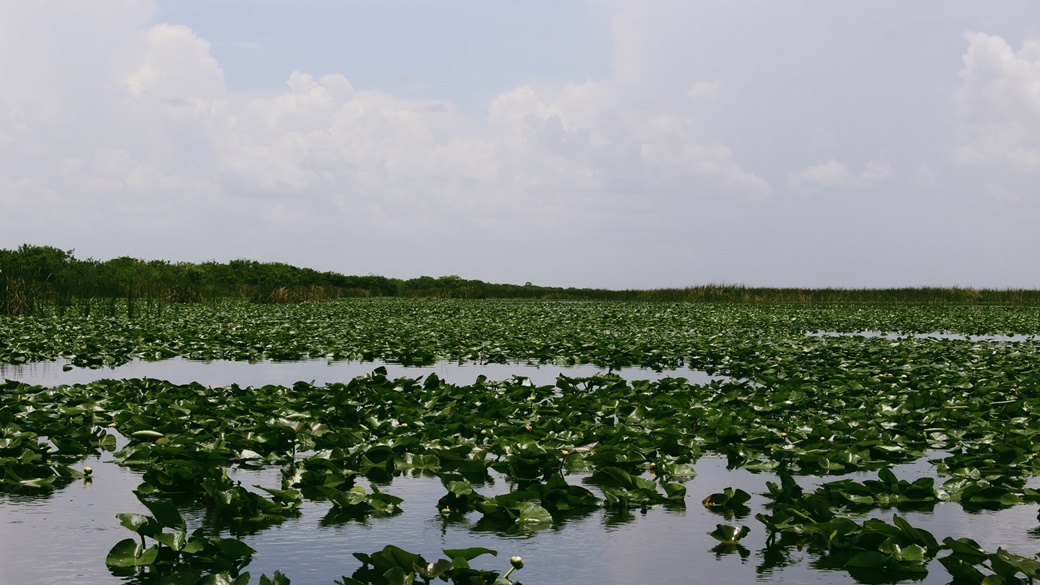
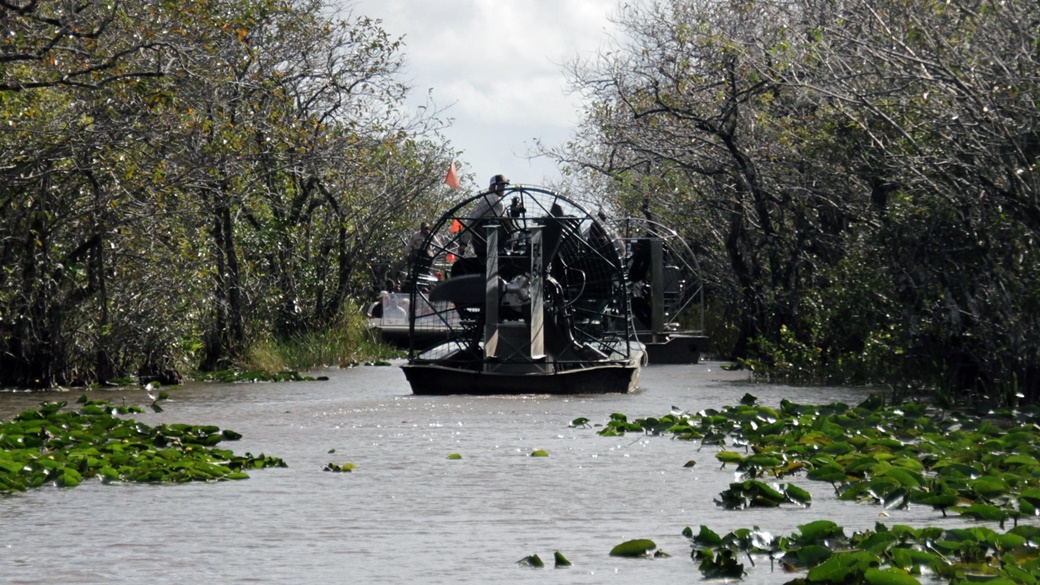
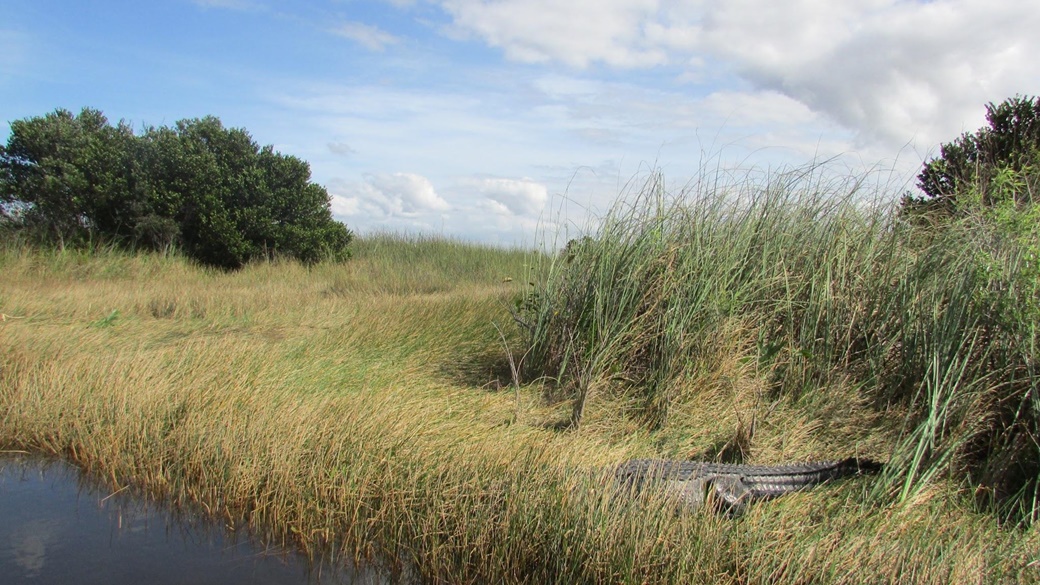
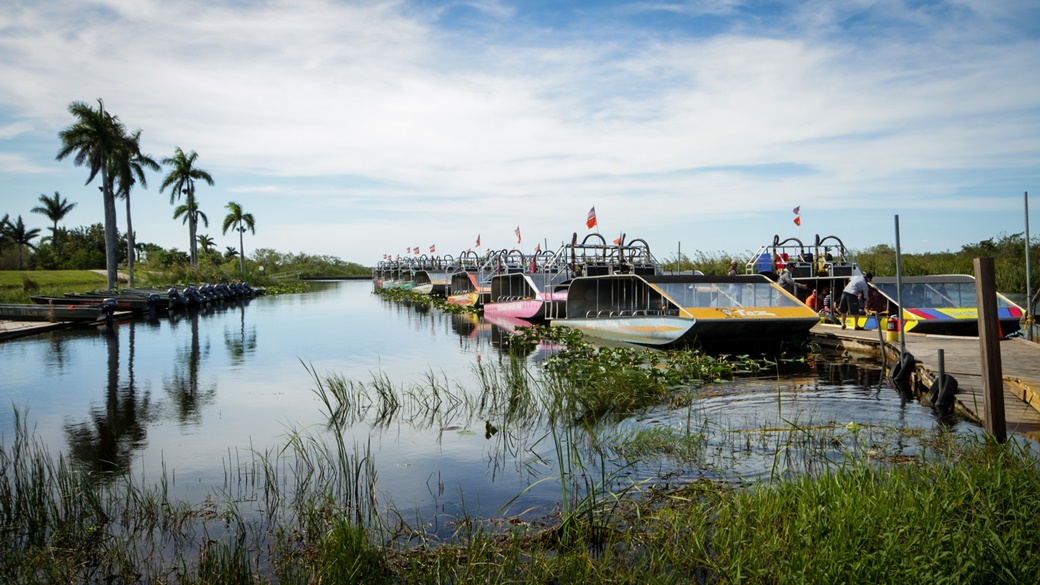
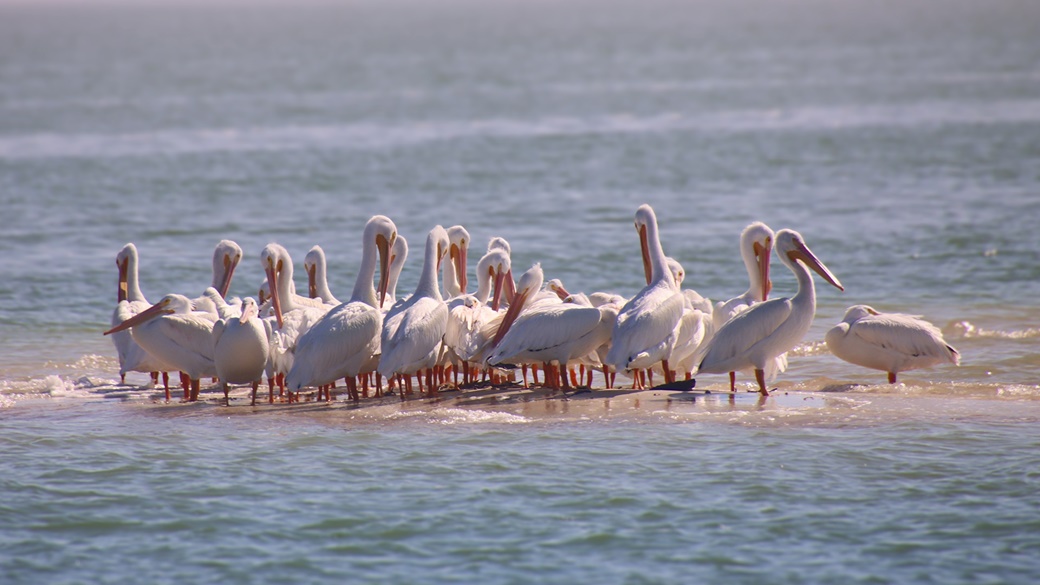
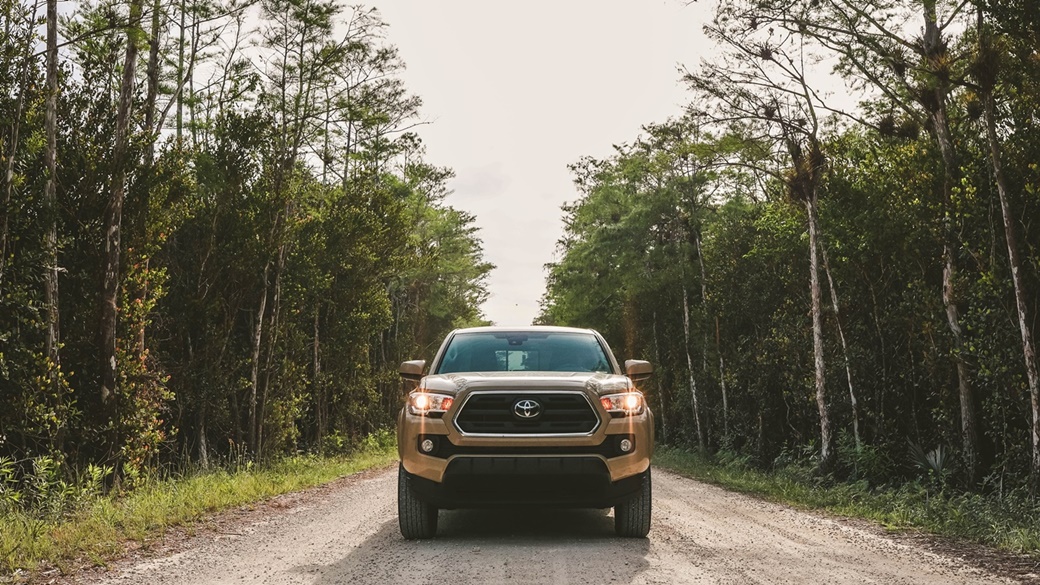
US National Parks
- National Parks of the USA – Map, List and Annual Pass
- America the Beautiful Pass 2025 – How It Works, Cost & Parks
- Timed-Entry Reservation for US National Parks (2025 GUIDE)
Travel Guides to USA National Parks

 10 Best Photo Places in the USA
10 Best Photo Places in the USA
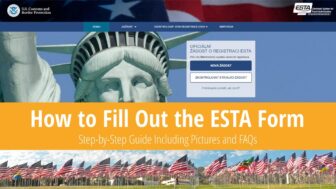



Contribute with Your Question or Personal Experience